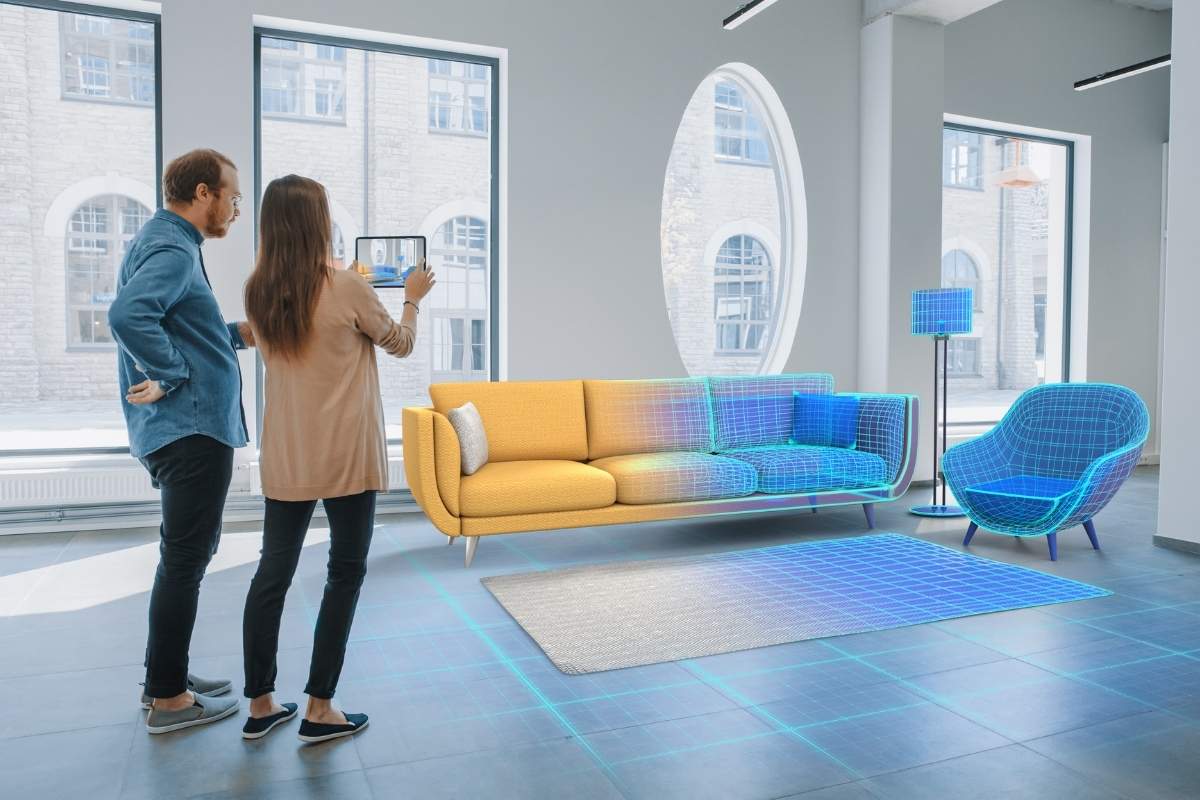
SUMMARY: Augmented reality (AR) is transforming digital marketing in 2025 by allowing brands to create immersive, interactive experiences that boost engagement and drive conversions. From virtual product try-ons to AR-enhanced ads and gamified campaigns, businesses are using AR to connect with customers in more personalized and memorable ways. With the right strategy and execution, AR can set brands apart and deliver meaningful, measurable results.
In 2025, digital marketing is all about connection — not just reaching your audience, but engaging them on a deeper, more meaningful level. And right now, one of the most powerful tools available to marketers is augmented reality (AR).
Far from a passing tech trend, AR has matured into a strategic advantage for forward-thinking brands. From virtual product try-ons to interactive AR advertisements, it’s revolutionizing how consumers experience content, products, and even brands themselves.
So, how exactly is this technology shaping the future of marketing — and how can your business start tapping into its potential? Let’s explore.
Why AR Matters in Today’s Digital Marketing Landscape
At its core, AR blends digital content with the real world. Whether through a smartphone, tablet, or AR glasses, users can interact with digital elements in real environments — bridging the gap between online browsing and physical interaction.
For marketers, this means unprecedented opportunities to:
- Capture attention in a crowded digital space
- Offer hands-on experiences without the need for a store visit
- Increase engagement and, ultimately, conversions
With customer expectations higher than ever, personalization and interactivity are key. And AR delivers both.
UNDERSTANDING GEN Z BEHAVIOR THROUGH DIGITAL MARKETING
The Rise of Immersive Customer Experiences
Today’s customers don’t just want to see a product — they want to try it, test it, and visualize it in their own world.
Here are a few standout ways brands are using AR in 2025 to deliver just that:
1. Virtual Try-Ons
Retailers in the fashion, beauty, and eyewear industries are leading the charge with AR-powered virtual try-ons. Consumers can “wear” clothing, makeup, or accessories using their smartphone cameras, building confidence in their purchase decisions.
- Example: L’Oréal’s AR beauty apps let users experiment with different makeup looks in real time — and purchase their favorites on the spot.
2. AR-Enhanced Ads
Interactive ads are no longer static banners or pre-roll videos. Now, brands can serve AR ads on platforms like Snapchat, Instagram, and even Google, letting users engage directly with products in 3D environments.
- Example: Amazon’s AR app allows users to place furniture in their homes virtually, visualizing size, color, and fit before buying.
3. Games & Storytelling
AR makes it easy for brands to create immersive game experiences — think treasure hunts, mini-games, or interactive stories that build brand loyalty and keep users engaged longer.
- Example: Pokémon GO allows users to use their phones to virtually catch and trade Pokémon while also interacting with other players.
How Businesses Can Integrate Augmented Reality Into Their Marketing Strategy
At ONE18MEDIA, we understand that it’s not about jumping on every new trend — it’s about leveraging the right tools to support your unique goals. If you’re considering adding AR to your digital strategy, here’s how to get started:
Step 1: Define the Experience You Want to Deliver
Do you want to increase conversions with virtual try-ons? Boost brand awareness with augmented reality games? Enhance in-store experiences? Clearly define your goal to ensure your AR initiative aligns with your broader marketing strategy.
Step 2: Choose the Right Platform
Not every AR experience needs to live in a standalone app. Thanks to WebAR (browser-based AR) and social platforms like Instagram and TikTok, creating accessible and shareable experiences has never been easier.
Step 3: Collaborate with the Right Team
AR development requires a mix of creative, technical, and strategic skills. That’s where a digital partner like ONE18MEDIA comes in. From ideation to execution, we help brands craft experiences that are not just cool — but conversion-driven.
Step 4: Test, Measure, and Refine
Like any marketing tactic, augmented reality should be tracked and refined. Monitor engagement metrics, time spent, conversion rates, and user feedback to improve the experience and maximize ROI.
HOW DIGITAL MARKETERS CAN USE AI RESPONSIBLY
The Benefits Go Beyond Engagement
While AR certainly boosts engagement and entertainment value, its benefits run deeper:
- Improved Purchase Confidence: Virtual try-ons and 3D product previews reduce returns and increase satisfaction.
- Differentiation: In crowded markets, augmented reality helps your brand stand out and stay top-of-mind.
- Data Insights: AR tools can provide valuable user data, including interaction behavior, preferences, and heat maps.
The Future of AR in Marketing
As 5G networks expand and augmented reality wearables become more mainstream, the potential applications for marketers will only grow. Imagine location-based AR shopping experiences, real-time product customization, or virtual brand reps walking customers through services in their own homes.
It’s not sci-fi — it’s the near future. And brands that embrace AR today will be better positioned to lead tomorrow.
If your business is ready for a personalized digital marketing strategy, reach out to ONE18 and take part in our 18POINT Discovery Analysis. We’ll pinpoint your strengths and weaknesses, so you can get back to what matters most – your clients.